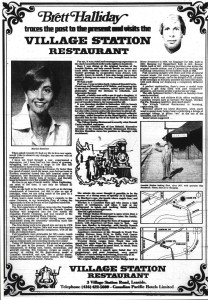This post is Part One in a series on native advertising by Mad Fish. It covers some history of what we consider “native advertising,” and its definitions according to the IAB. Future posts in this blog series will highlight each of these in detail, including examples of their use, effectiveness of each, and best practices for implementation.
Recently, the term “native advertising” has become very popular with both advertisers and publishers alike. Often used interchangeably with “content marketing,” it refers to a form of advertising that fits seamlessly into a particular website’s layout and design.
According to the IAB, native ads are “ads that are so cohesive with the page content, assimilated into the design, and consistent with the platform behavior that the viewer simply feels that they belong.”[i] These ads create a more natural, uninterrupted flow to newsfeeds, articles, or social streams.
While this may sound like a reasonable definition at first glance, it becomes problematic in its application because it is so vague and broad that often it seems as if it the term is used as a catch-all for any advertising that isn’t a flashing banner ad. Indeed, the IAB identifies six different categories of native ads, running the gamut from AdWords to online advertorials. There’s even one called “Can’t Be Defined!”
Six native ad unit categories:
- In Feed
- Paid Search
- Recommendation Widgets
- Promoted Listings
- In-Ad with Native Element
- Custom / “Can’t Be Defined”
This list has a wide variability of applications and definitions, from what most advertisers identify as Paid Search (Google and Bing ads) to In-Feed units. In addition to the format, the IAB broadens its definition of native ads depending on their function, integration, targeting, and measurability.
Given the IAB’s ambiguous definitions, native advertising seems to be a little bit of everything, including paid search. However, there are three ad units in particular that are most commonly referred to as “native,” Promoted Listings, In Feed, and Recommendation Widgets. We will discuss these formats in Part Two of the series. For now, let’s take a quick look at the history of native advertising.
Native Roots
Buzz Feed is often credited with “inventing” native advertising. The site has had a tremendous amount of success incorporating sponsored content into their news feed, and receives the majority of its advertising dollars from these in-fee ad units. But while the online method of distribution is new, native advertising online is just the most recent iteration of a form of advertising that has been around for a long time.[ii]
Depending on the mediums advertisers have had at their disposal, native advertising has taken many different forms; advertorials, sponsored radio programs, infomercials, Soap Operas, and even product placements could be considered “native” to their particular medium:
A Brief History of “In-Feed” Native Advertising
1910: Advertorial – Ads disguised as editorials debuted in newspapers
1920: Branded Radio – music and stories in the form of an ad, provided to brands for free
1930: Sponsored radio programs – brands began to pay for their radio spots
1940s-1950s: Branded TV and Soap Operas – TV programs created almost exclusively to market products
1960s-1970s: Space, Pop, Culture & Commercial – shorter commercials in-between regularly scheduled programs.
1980s: Infomercials- 30 minute scheduled TV advertorials
As advertisers and publishers alike continue to search for more effective ways to reach their audience, it comes as no surprise to see old methods of ad distribution come back around. But native advertising online has some very unique aspects that could be considered much different from those that came before:
Measurement: The ability to measure engagement with a target audience and track performance of native links through analytics tools means that advertisers have greater insight into ad performance than ever before.
Automation: While still a challenge for content marketers, automation is slowly becoming more feasible, particularly for recommendation widgets through platforms such as Outbrain. Large publisher networks such as Google are also looking into ways to automate native content across its network
Variability: Native advertising takes on a variety of forms, giving advertisers many choices of how to distribute content. This variability is both a benefit and a hindrance to advertisers – they get a lot of options, but with those options comes loads of different formatting requirements.
Native advertising and content marketing in general is steering digital advertising in new and exciting directions. As ROI from traditional text and banner ads decreases, the importance of implementing native ad strategy is becoming increasingly important. Advertisers and publishers must not only begin to incorporate native advertising strategies into their overall marketing efforts, but be familiar enough with their workings to implement them effectively without missteps.
If you are interested in seeing if native advertising is right for you, contact Mad Fish. We are happy to help get you started.
For more information on native advertising and content marketing, including best practices for implementation and automation, stay tuned for Part Two in our series.



